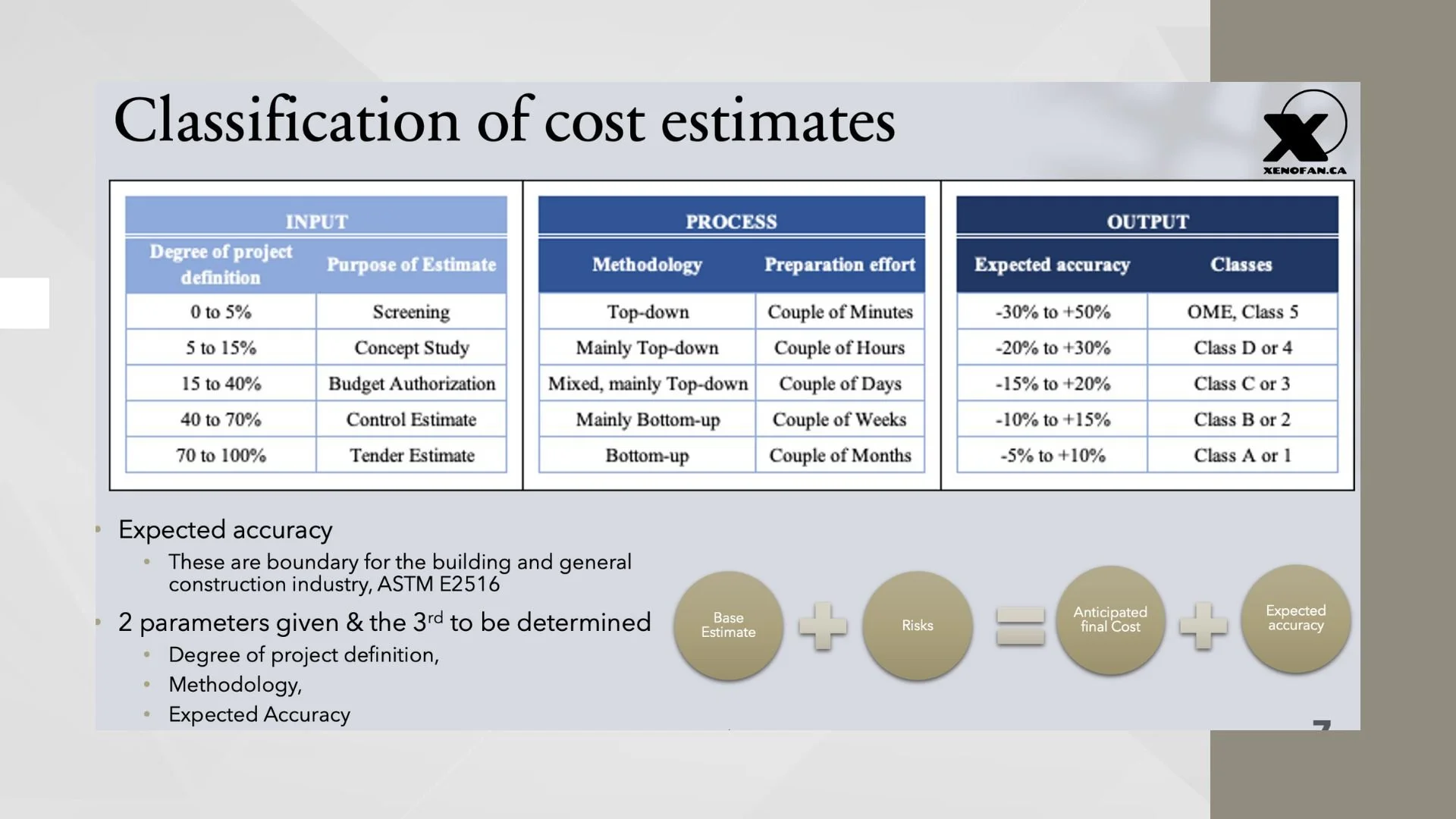Cost Estimate Classification System
Organizations rely on cost estimates to make informed decisions about their projects. Cost estimates must be expressed in a concise language and must convey “falsifiable” professional opinion.
Drawings are a form of language used to transfer ideas between construction project stakeholders, ie Project sponsors, architects, engineers, regulators, builders, suppliers and end users. Likewise, cost estimations must be expressed using a standard of language or best practices understood by professionals and their clients.
The accuracy of cost estimation (a) is mainly dependent on the degree of project definition (b) and the level of effort (c) required to develop the estimate. One of these three attributes must be solved for by the cost estimator and two others given or assumed. At early stages, the degree of project definition is very low, about 2 to 5%. In this case, only a Rough Order of Magnitude Estimate (OME) can be provided and its development would require less level of effort. At late planning stages, when designers would have refined the project scope to about 70% or more, a Detailed Cost Estimate (DCE) could be developed. DCE estimates are more accurate than Preliminary Cost Estimates (PCE) or OME estimates but would require a high level of effort by cost estimators – More work hours and data collection.
Terms like Rough Order of Magnitude and Detailed Cost Estimates may have different meanings for different groups of people. In North America, there is a standard for cost estimation; “ASTM E2516-11(2019), Standard Classification for Cost Estimate Classification System”. This standard sets five classes of estimates: Class 5, Class 4, Class 3, Class 2 and Class 1. In Canada, the terminology seems to have been driven by the federal government business practices. Cost classifications are OME, Class D, Class C, Class B and Class A. For the building and general construction industry, the followings are the boundaries in terms of expected accuracy. The degree of project definition and the level of effort required should not be ignored. Moreover, other industries do not have the same expected accuracy.
Class 5 or OME estimates have an expected accuracy from -30% to +50%
Class 4 or Class D estimates, from -20% to +30%
Class 3 or Class C estimates, from -15% to +20%
Class 2 or Class B estimates, from -10% to +15%
Class 1 or Class A estimates, from -5% to +10%
These are thresholds to assess, a posteriori, the efficiency of any cost estimates. If a Budget Variance is out of control limits, Cost Analysis and Reconciliation must be done to identify inconsistencies in estimate assumptions and in project scope. The expected accuracy of cost estimates draws a demarcation line between an estimate and a pseudo-estimate. It represents the falsification criteria for cost estimates – using Karl Popper’s theory.
You probably want to learn also about schedule classification systems! There is an article on our blog for you.
Do you need professional cost estimating assistance with your project ?
Contact Xenofan Consultants for a free consultation and take the first step toward success!
In addition to cost estimating, we offer comprehensive construction project management services.
Your Experience is our Priority
Disclaimer
The content of this post is provided for educational purpose only. It does not represent any professional advice. Please consult with a professional for your project or refer to the standards and references below.
References
ASTM E2516-11(2019), https://www.astm.org/e2516-11r19.html
AACE International Recommended Practice: No 17R-97, No 18R-97 and No 56R-08, https://web.aacei.org/resources/recommended-practices
Guide to cost predictability in Construction: an analysis of issues affecting the accuracy of construction cost estimate, Joint Federal Government / Industry Cost Predictability Taskforce, November 2012.
Doing Business with PWGSC: Documentation and Deliverables Manual, January 2018


